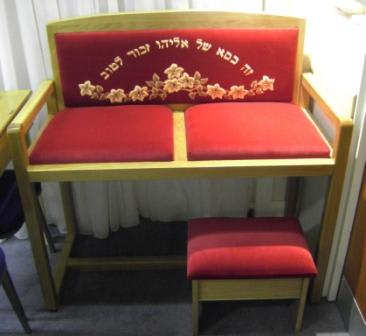Our parsha begins with the laws of the tumah of a woman who gives birth to a boy. By the way, it mentions that the boy should be circumcised on the eighth day (Vayikra 13:3), in accordance with the covenant made with Avraham in Bereshit (17:12).
The Tur writes: “This mitzva is greater than other positive commandments, for it involves the punishment of excision.” (YD 260). The only other positive commandment with this punishment for omission is the Pesach sacrifice. Both commandments are symbols of belonging to the Jewish people, so it is logical that neglecting them is punished by karet.
A REPAIR
A recurring theme in the sources on milah is the idea that it is a repair. When the Roman ruler asked Rebbe Akiva why the Jews perform circumcision, which he viewed as marring the body, Rebbe Akiva pointed out that on the contrary everything we enjoy in the world is improved by human intervention. From wheat grains we make fancy pastries, from stalks of flax we make beautiful garments, and so on. (Tanchuma Vayikra 12:3.)
We can find a source for this idea in the Torah. When Hashem makes the covenant of the milah with Avram, He uses the name “Shad-ai”. (Bereshit 17:1.) Chazal connect this name to the word “dai”, meaning “enough”, saying that this name reminds us that HaShem created the world with limitation. “I am the one who said to the world, Enough!” (Chagiga 12a.) G_d is saying to Avram, I am the G_d who created the world with limitation and imperfection; you go before Me, perfect the world and make it a fit place for My holiness. In this way you will make yourself whole.
In the Aleinu prayer we pray that we will be able to “repair the world in the kingdom of Sha-dai”; again, this name of HaShem is associated with our role in repairing the world.
HaShem didn’t give us a perfect world but rather a perfectible one. Human activity is essential to improving and repairing the world. Even the human body is not perfect, for men are born with a superfluous part, the foreskin. The brit milah, performed on the infant on the eighth day when he is only a week old, reminds us that if we want to repair the world we must start by repairing ourselves.
MILAH AND TUMAH
Our parsha deals primarily with the skin affliction tzara’at – often translated as “leprosy” though it is unrelated to the disease we call leprosy today. Why then is circumcision mentioned? Our Sages learned that the verse teaches us that we may perform a milah even if the foreskin is leprous – even though cutting off tzara’at is usually forbidden. (Shabbat 132b.) Let us examine the inner meaning of this law.
Chazal taught that tzara’at is a kind of spiritual affliction which is a punishment for lashon hara – malicious gossip. This is learned from Moshe, whose hand whitened when his words suggested that the Jewish people were of weak faith (Shemot 4:1-8 and Rashi), and from Miriam who was stricken when she questioned the uniqueness of Moshe’s level of prophecy. (Bamidbar 12:1-10).
Immediately following the prohibition to cut away leprous skin is an admonition to remember what happened to Miriam, which Rashi explains is a warning to refrain from malicious gossip. (Devarim 24:8-9.) The message seems to be that if a person is “infected” with this sin, it is of no use to remove the symptoms without treating the underlying disease by improving our moral character.
The main kind of lashon hara punished with tzara’at is denigration of the Jewish people as a whole, such as questioning their faith or the level of prophecy which leads them. And even the severity of ordinary gossip is related to the fact that all Jews who adhere to HaShem’s covenant should be considered basically righteous. So saying lashon hara can be seen as a kind of separation from the Jewish people, symbolized by the isolation imposed on the metzora. Removing the affected skin can represent a desire to conceal this separation without dealing with it.
But the milah is the ultimate symbol of connection to the Jewish people. A man who cuts off a leprous orla is not denying his separation from the nation but rather repairing it by affirming his adherence to the covenant. So this particular excision is not included in the prohibition.
When Eliyahu’s words seemed to question the Jews’ commitment to the covenant, Hashem did not punish him with tzara’at, but did order him to witness each and every brit milah so that he could testify that we do indeed adhere to the brit. (Zohar Lech Lecha, I: 93a; Vayigash, I 209b.) This confirms the idea that while tzara’at is a punishment for the sin careless speech, the milah is a rectification of this sin.
Rabbi Asher Meir is the author of the book Meaning in Mitzvot, distributed by Feldheim. The book provides insights into the inner meaning of our daily practices, following the order of the 221 chapters of the Kitzur Shulchan Aruch.
The words of this author reflect his/her own opinions and do not necessarily represent the official position of the Orthodox Union.
